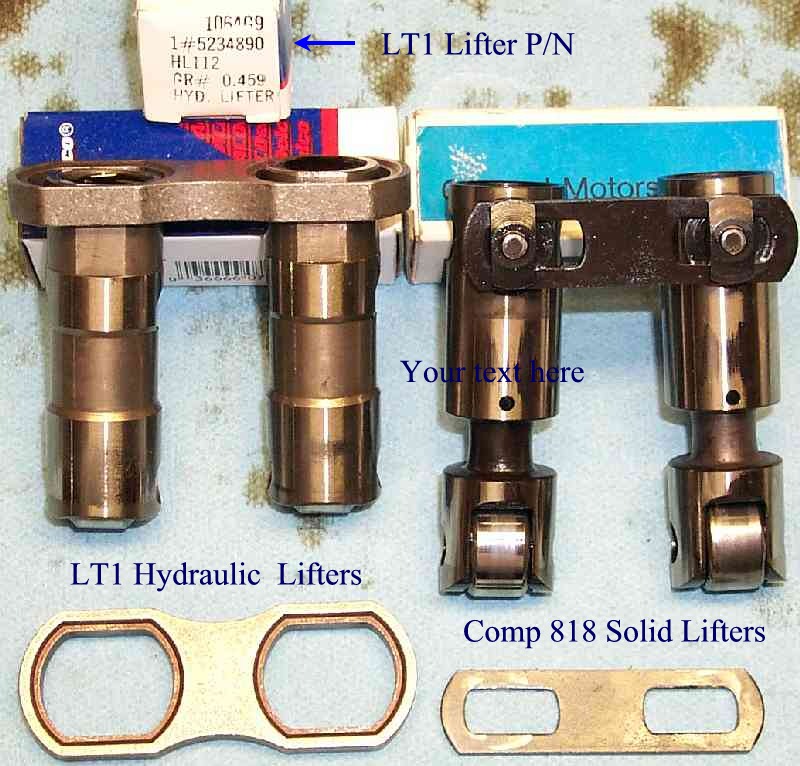
Note how the oil orifices are 90* off between the two lifter designs.
I included the link bar setups to contrast how the LT1 works vs. thetraditional SBC design.
Note the LT1 lifters are controlled w/o adding any mass to the valve
train - this is very trick racer boy stuff engineered into a stock
engine. This helps to offset the extra mass of the piston and oil in
the hyd. lifter body.
Lots of Chevy Goodness here.
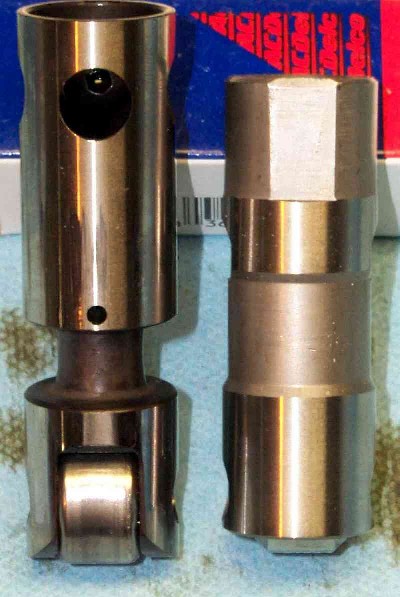
The solid lifter is completely hollow and lightened. Note the oil orifices.
Does the solid lifter get low enough to spray oil down onto the cam?
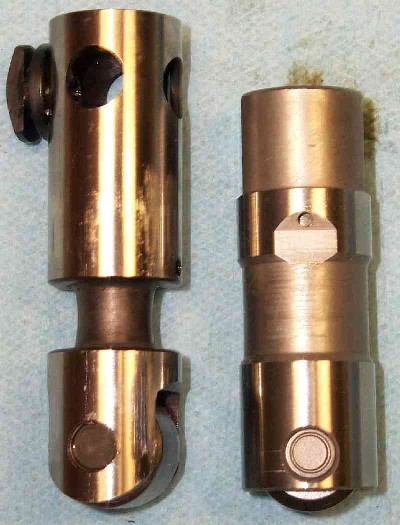
Note the chamfer on the hydraulic lifter. There
is another chamfer on the other side, sans orifice.
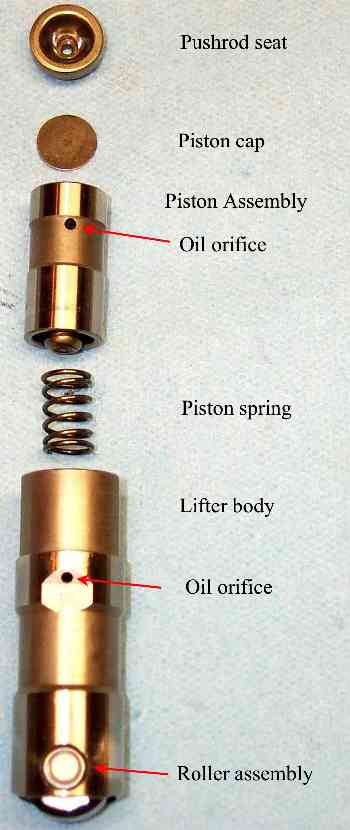
I forgot to put the clip that holds the pushrod seat
in the lifter, sorry.
the depth at which the piston is pushed into the lifter body.
The piston then self adjusts to wear and heat creep of dimentions
in the valve train from there, so you don't have to constantly
be re-setting the lash on the valves like in the good ol' days.
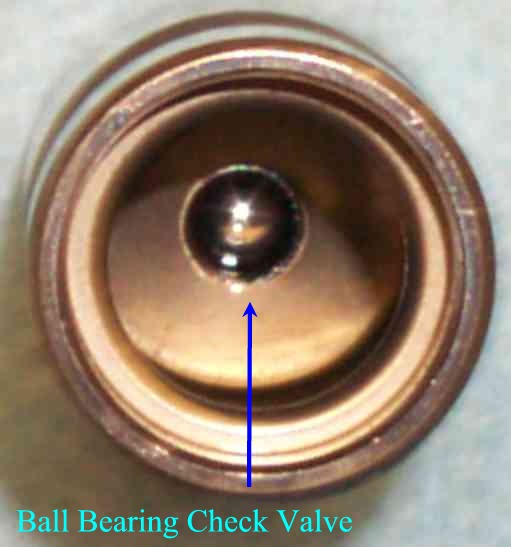
A handy shot of the ball bearing check valve.
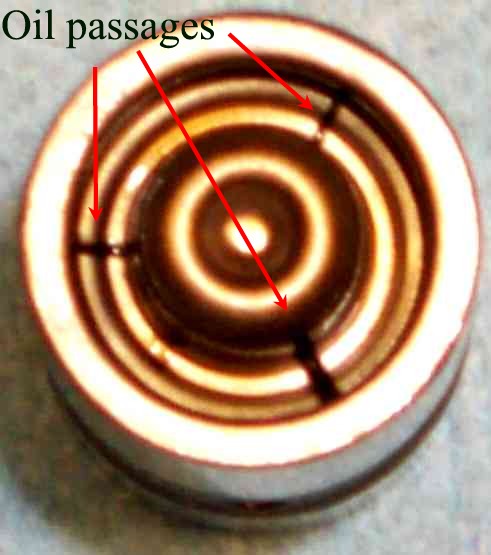
The three slots meter the oil flow underneath the piston.
They are amazingly small considering the work the lifter does.
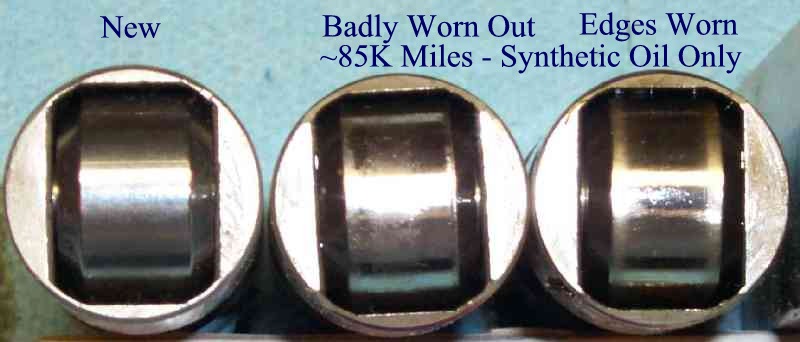
Now this is a depressing image. I discovered 3 wounded lobes
on my LPE cam. These lifters were associated with those lobes.
The center of the 2nd lifter roller is badly worn out, the
right lifter is worn on the edges of the roller. Remember - these are hydraulic lifter and they are pretty much
shot after 80K miles on a mild blower cam and ???# springs.
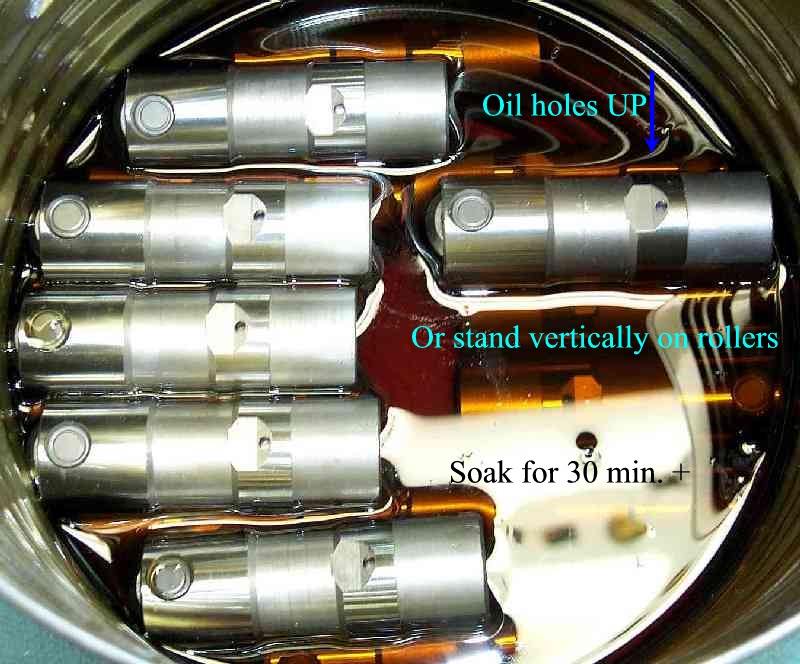
Pretty much obvious...
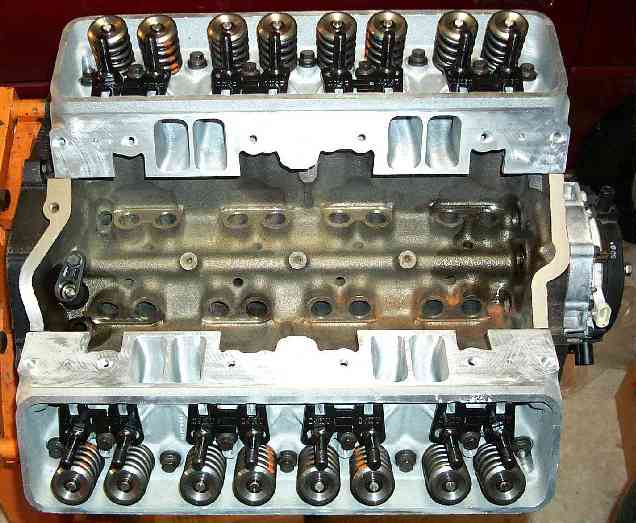
It's getting there... :)
Back to Pit Row